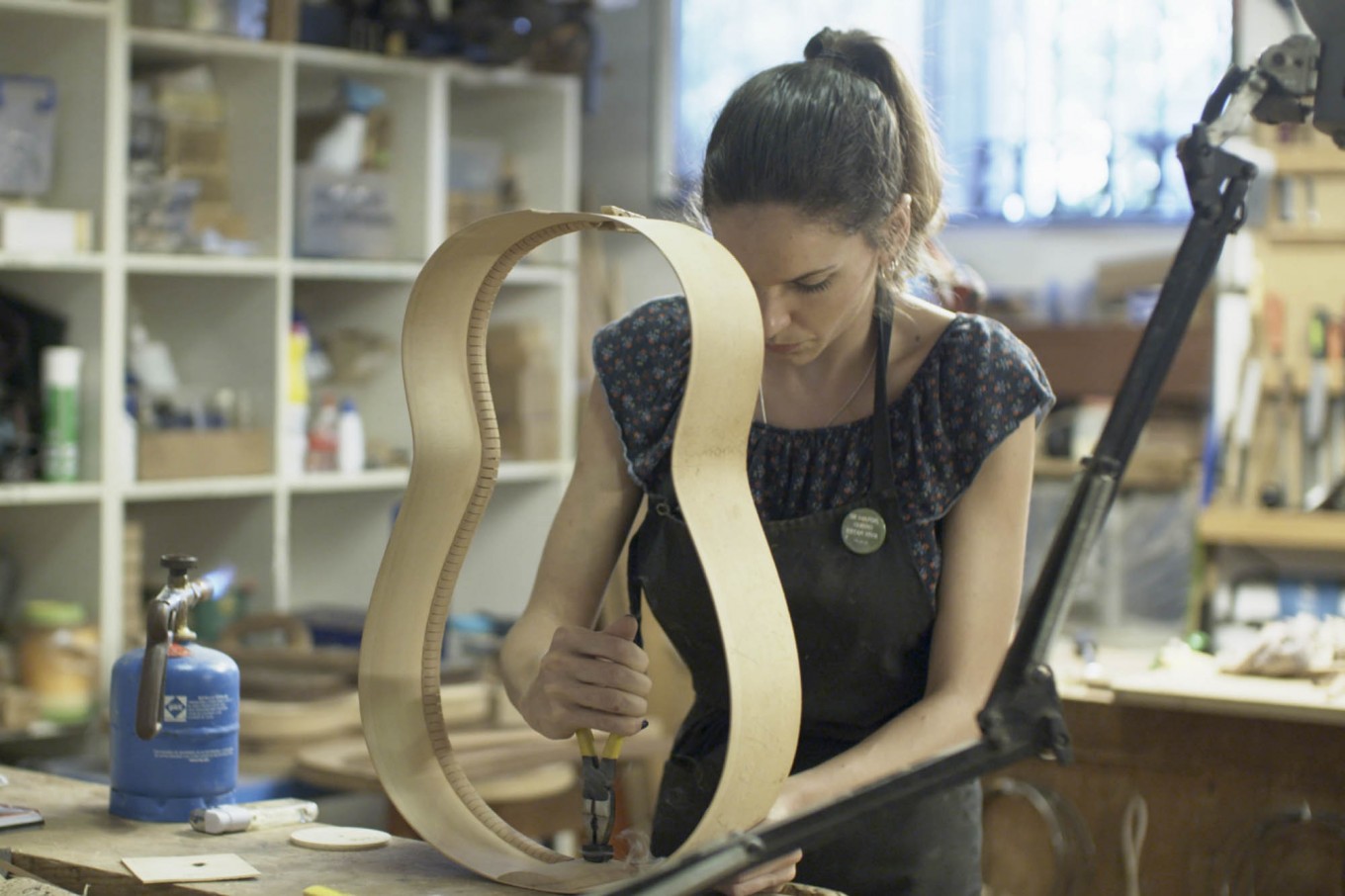How to make a Flamenco guitar
Maria Conde works alongside her father, brother, and one other craftsman in the workshop where they create classical and flamenco guitars that retail from €2,355 to €12,000 ($2,700 to $14,000).
Change Size
 Maria Conde works alongside her father, brother, and one other craftsman in the workshop where they create classical and flamenco guitars (Bloomberg/-)
Maria Conde works alongside her father, brother, and one other craftsman in the workshop where they create classical and flamenco guitars (Bloomberg/-)
“I always try to put a little bit of my soul in the guitar,” says Maria Conde of the handcrafted flamenco instruments she creates at the Conde Hermanos workshop in Madrid.
The Conde family has been creating guitars for more than 100 years, and Maria grew up surrounded by the family business. “I was born close to here,” says the 29-year-old luthier of the workshop she remembers visiting as a child.
“The business started with the uncle of my grandfather in 1915,” says Conde, who today works alongside her father, brother, and one other craftsman in the workshop where they create classical and flamenco guitars that retail from €2,355 to €12,000 ($2,700 to $14,000). Classical guitar players always look for a “neat note, a bright sound,” she says. Flamenco guitarists “just want soul.”
Continuing the family tradition was not something Conde had contemplated while studying psychology at university. “My father suggested I come to the workshop in the evenings just to try. And I found it beautiful to know how the family business worked and how to make a guitar.” Conde began working at the company five years ago.
Conde says it takes her about two and a half months to complete two guitars, all created by hand using wood (usually German spruce) that has been dried for at least 30 years. “Which means the materials that I am buying now will be used, if I’m lucky, by my daughters or sons or whoever wants to learn this business.”
It also means the wood Conde is working with was chosen by her grandfather. “It’s quite special because they were the materials that my grandfather picked, and I get to touch,” she says. “I never met him. He died one month before I was born. So I get to touch the things he picked without knowing they will be for me, because I am the first woman in the family to make guitars.”
The wood, Conde says, “always reminds me about who I am, where are my roots, where I belong to.”
Once the wood has been selected, crafting of the guitar begins with the shaping of the neck. The second part, says Conde, is the larger top board where the rosette will be placed and a hole removed to accommodate the bracings, all using templates created by her grandfather.
The rosette is one of the most difficult parts to do but also one of the most creative, she says. The intricate design inlaid around the sound hole is fashioned from tiny decorative pieces of wood to give each guitar a unique look.
Read also: Yellow Prince guitar sells for $225,000 in New York
The back piece goes through periods of sanding to get to the correct thickness before the luthier places both the top and back in a solera, or mold, “to give the guitar a curve so it sounds better.” For the curve on the side pieces, first they’re soaked in water for a couple of hours before being pressed and bent by hand into the desired shape using a small, rounded tabletop oven.
To join the sides to the top and back, Conde uses glue and multiple clamps, noting that there needs to be enough pressure to bond the parts together but “not so much that the sides can break.”
Next comes the fingerboard, created from ebony, and then the frets, or metal strips, are added. You have to be very careful in the distribution of the frets, Conde says, adding that if a fret is out of place by even a millimeter it would be impossible to tune the guitar.
Once the guitar is varnished, the neck and bridge boards must be adjusted, which, along with the keys, will ultimately decide the tension of the strings. The process, including stringing the instrument, can sometimes take an entire day.
Although perfection is strived for, it’s somewhat beside the point, says Conde. In the end, it will be the owner of the guitar who will adjust the instrument to express his or her desires.








